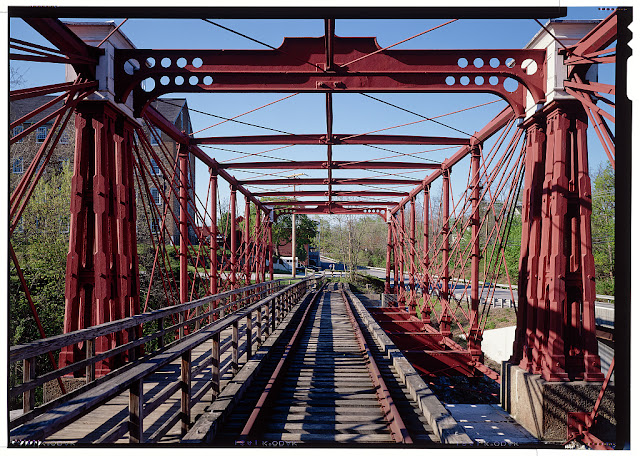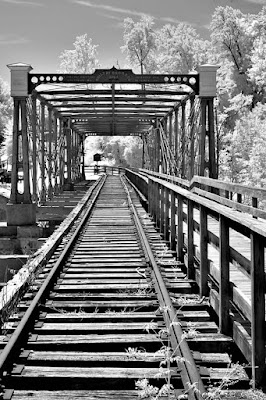 |
| Street View, Jun 2019 |
 |
| HistoryLink, ca. 2010 Courtesy Chelan County Public Utility District Author: Phil Dougherty, License: Attribution-NonCommercial-NoDerivs (CC BY-NC-ND 3.0) "It is the first dam built on the Columbia River." |
 |
| HistoryLink, Courtesy Great Northern Railway Historical Society Rock Island without dam, pre-1933 |
 |
| cbr First Powerhouse Nameplate capacity: 1933: 3 @ 20.7 MW, 1 @ 15 MW, 1953: 6 @ 22.5, 212 MW total Second Powerhouse Nameplate capacity: 1979: 8 @ 51.3 MW, 410.4 MW total Total Nameplate capacity: 622.5 MW total Peak capacity: 660 MW total |
 |
| VisitWenatchee "Dam contains 31 spillway gates." The 1953 expansion supported Alcoa. |
It uses sluice gates.
 |
| 0:19 video @ 0:00, Logan Cleek, Jun 2020 |
 |
| HistoryLink, ca. 1960 Courtesy University of Oregon Author: Phil Dougherty, License: Attribution-NonCommercial-NoDerivs (CC BY-NC-ND 3.0) [A view before the second powerhouse was built.] "The dam measures 3,800 feet long and has 32 spillway gates. Despite early talk that it would provide irrigation to the area, the dam's sole purpose is to generate electricity. It was originally built with two fish ladders, one located on each end of the dam. Concerns over insufficient fish migration through the ladders led to the construction of a third fish ladder through one of the center spillways in 1936, leaving 31 operating spillway gates." |
 |
| 1 of 25 photos of other subjects posted by Scott Butner Order here: https://scottbutnerphotography.squarespace.com/readytohang-wall-art/p/rock-island-dam |
The first powerhouse was on the east side.
 |
| 1986 Rock Island Dam Quad @ 24,000 |
 |
| wsu, cropped "The development of fisheries along the Columbia has a long and varied history. Even before the advent of the white man, some 50,000 persons made the salmon a substantial part of their daily diet, taking an estimated 18 million pounds in their annual catch. The first recorded commercial fishing operations involving export of Columbia River salmon occurred in 1829, when Captain John Dominus of the ship Owyhee salted down 58 barrels for export shipping. The first canning plant was established on the Columbia at Eagle Cliff, Washington, by the firm of Hapgood, Hume and Co., which put up 4,000 cases of salmon in 1866. By 1883 some 39 canneries were in operation. 'Since 1866 the river has produced almost 2 1/4 billion pounds of salmon, or a value close to a billion dollars.' On Dec. 29, 1938 the U.S.B.R. awarded a contract for 8 specially constructed tank trucks to be used for hauling the trapped fish from Rock Island Dam to the Leavenworth holding ponds, to the Kenworth Motor Truck Corp. of Seattle for $59,041.12." |
 |
| Steven J. Brown posted Amtrak Empire Builder #7 at dawn approaching the Rock Island Dam on the Columbia River at Voltage, Washington - February 6, 2005. Steven J. Brown shared |
When I first looked at a satellite image, I wondered why the dam was built on a wide part of the river. The above two aerial photos shows that they widened the river to make room for the second powerhouse.
 |
| 3D Satellite |
 |
| Tyler Hilliard commented on a post A look at the operating ring and wicket gate arms on the downstream side of the powerhouse. [Other comments indicate that it uses horizontal Kaplan turbines in the second powerhouse and vertical Kaplan turbines in the first powerhouse.] |
 |
| May Moon posted Rock Island Dam under construction. It was completed in 1933. Dennis King: Greg Summers Hydroelectric development of the Columbia River in the United States began with the construction of Rock Island Dam, completed in 1932. A year later, the United States government, through the United States Army Corps of Engineers began construction of Bonneville Dam, followed by Grand Coulee Dam in 1934. Bonneville first power 1938, Grand Coulee Dam 1941. Mike Kluth shared From the Wenatchee Valley Facebook group. |
Tyler Hilliard provided four photos along with the comment: "Currently doing rehab on powerhouse 2 that was completed in 1979. First horizontal bulb units in the nation, and the largest in the world when installed."
 |
| 1 |
 |
| 2 |
 |
| 3 |
 |
| 4 |

























.jpg)
.jpg)













.jpg)


